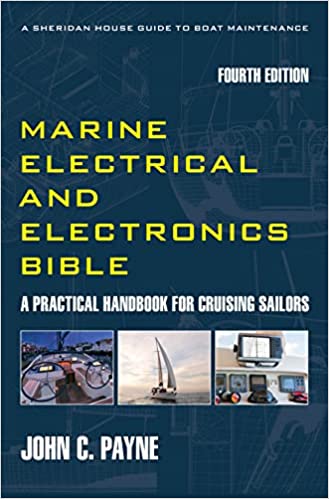Marine Diesel Engines for Sailboats
How to keep marine diesel engines for sailboats and their main and critical engine electrical systems functional. There are a variety of maintenance philosophies used in commercial and offshore-based rigs and ships. The traditional and most accepted methodology is the Planned Maintenance System (PMS). This system is based on maintenance tasks based on time intervals, either set periods or operational hours, and is still a useful basis for maintaining equipment. Many simply break down such maintenance activities as pre sailing season and post season and pre-layup tasks and activities.
In most
cases the only planned maintenance undertaken is engine oil changes based on
running hours. Some nay follow the engine manufacturers maintenance schedule guidelines found in the engine manual. The previous FMEA
exercise allows the implementation of what is called Risk Based Maintenance and
Inspection. In the latest 4th Edition of the Marine Electrical and Electronics Bible I also explain Reliability Centered Maintenance. We have evaluated all the
areas most critical to boat operation, and risk assessment is key to making sure systems don't fail, so the maintenance strategy should be centered
on this. For example we know that the main
failure causes are poor connections so routinely checking and tightening them
reduces the failure rate. As a start
point perform the recommended maintenance on all critical equipment and
systems.
All cable terminations and connections on battery charging alternators, diesel engine starter motors, engine blocks, and battery terminations should be check tightened every six months, it is an easy task and results in fewer intermittent and complete failures. Many under estimate the effects of vibration on cable terminations. It is as not as onerous as it seems and it really will pay big dividends. Remember to switch all the electrical power off before you start the cable termination tightening exercise.
Marine Diesel Engines for Sailboats
Starter Motor Maintenance
Starter Motors. Engine starter motors have relatively low failure rates, as the actual operating hours are relatively low in comparison to a motor vehicle application where they get operated several times a day in many cases. Starting motor failures are usually dependent on operational frequency with seized bearings, or stuck brush-gear being the major failure causes. Starter motors sit for long periods without rotation, and often the bearings seize up or bind due to inadequate lubrication or the impacts of moisture and corrosion. This also applies to the meshing mechanisms which also suffer from lack of operation. Internally the brush gear also sticks as they are spring loaded and when stationary for so long can tend to bind as carbon dust can cause improper sliding. Stuck or jamming carbon brushes can result in sparking and arcing on the commutator which soon wrecks the surface.
Regular starter motor operation reduces failures, so running the engine regularly has positive advantages. In addition this will generate heat within the starter motor, which assists in displacing any accumulated moisture within the windings. Starter motors should be cleaned or overhauled on a regular basis, ideally not exceeding two years. The most economical solution is to remove the starter and take it to my favorite automotive electrician, and often get it back in the same day if you make an arrangement for that. If your boat has not had the starter out in several years, then a complete service is a good precaution before you head off on any extended voyage. Your propulsion and electrical supply all hangs on this motor starting every time. In most cases the start motor solenoid is incorporated with the starter motor and making sure this is also in good condition is critical, and so when servicing check the solenoid is not seizinga nd moving freely and the main current contacts are also not pittd or degraded.
The 4th Edition of the Marine Electrical Electronics Bible Get your copy and start becoming self sufficient and save money on expensive technician callouts. The 4th Edition of the Marine Electrical Electronics Bible Get your copy and start becoming self sufficient and save money on expensive technician callouts.Marine Diesel Engines for Sailboats - Alternator Maintenance
Alternators. Alternators have quite a low failure rate, as actual operating hours are also relatively low. Failures are generally caused by diode failures, or overheating, in particular with fast charge regulators and oversized battery banks. Alternators should be cleaned and overhauled on a regular basis, ideally not exceeding two years. Consider a higher output marine alternator to reduce overloading and heating. Again it is cheaper to take it to an automotive electrician and have it overhauled before you set out.
Marine Diesel Engines for Sailboats
Battery Maintenance
Engine Starting Batteries. Starting batteries generally have the highest failure rate of all components. This is not failure in the true sense but due to either inadequate charging with resultant sulfation, lost capacity and failure, or flattening of the battery with subsequent damage. In most cases this is due to poor systems design or human factors. The second highest failure cause is inadequate inspection and topping up of electrolytes, with resultant plate damage if you are using lead acid flooded cell batteries. Consider different batteries such as AGM types with lower failure rates, improved charging characteristics and elimination of the human and maintenance factor. A consequence of the tragic Sydney – Hobart yacht race is a coroners recommendation for installing only sealed batteries, read about this in the battery pages. All these are good reasons to upgrade and improve overall systems reliability. More sailboat engine advice and information on boat charging systems.
